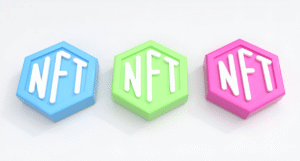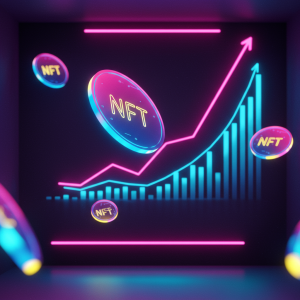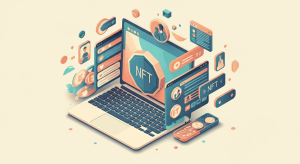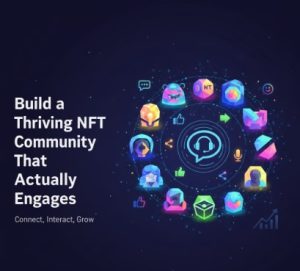How to Create an NFT Marketplace: A Comprehensive Guide

The NFT market has transformed digital ownership, creating new opportunities for creators, collectors, and entrepreneurs. Building your own NFT marketplace allows you to tap into this growing ecosystem while offering unique value to users. This guide will walk you through the essential steps to create a successful NFT marketplace.
Understanding NFT Marketplaces
An NFT marketplace is a platform where users can mint, buy, sell, and trade non-fungible tokens. Unlike cryptocurrency exchanges dealing with fungible tokens, NFT marketplaces handle unique digital assets representing ownership of specific items like digital art, music, videos, virtual real estate, and more.
Key Features Your NFT Marketplace Needs
Your NFT marketplace should include these essential components:
User Registration and Profiles
Create a seamless onboarding process with wallet integration, KYC verification where necessary, and customizable user profiles. Users should be able to showcase their collections and establish their identity within your platform.
Storefront and Gallery
Develop an intuitive interface where users can browse NFTs with advanced filtering options, view detailed information about each token, and explore creator profiles. An appealing visual gallery is critical for displaying digital assets effectively.
NFT Minting Functionality
Enable creators to mint their own NFTs directly on your platform. This process should include uploading the digital asset, setting properties, determining royalties, and deploying the smart contract to the blockchain.
Listing and Trading System
Implement a secure system for users to list their NFTs at fixed prices or through auctions. Your marketplace needs to facilitate smooth transactions between buyers and sellers while maintaining security and transparency.
Wallet Integration
Support various cryptocurrency wallets, such as MetaMask, Trust Wallet, or WalletConnect, allowing users to connect to your platform, authenticate transactions, and store their digital assets securely.
Search and Discovery
Build robust search functionality with filters for categories, price ranges, creators, and trending items. Effective discovery mechanisms help users find relevant content and increase engagement.
Step-by-Step Development Process
Step 1: Define Your Marketplace Concept
Begin by identifying your niche and target audience. Will you focus on digital art, music, gaming items, or create a general marketplace? Your specialization will influence your design decisions and marketing strategy.
Step 2: Choose Your Blockchain
Select the blockchain network that aligns with your goals. Ethereum remains popular due to its established ecosystem, but alternatives like Solana, Binance Smart Chain, or Flow offer advantages in terms of transaction costs and speed. According to recent blockchain statistics, different networks offer varying tradeoffs between security, scalability, and costs.
Step 3: Design the Technical Architecture
Map out your system architecture, including:
- Smart contracts for NFT standards (ERC-721 or ERC-1155 on Ethereum)
- Backend services for data management and business logic
- Frontend interface for user interactions
- Storage solutions for metadata and digital assets
Step 4: Develop Smart Contracts
Create and audit the smart contracts that will handle NFT minting, transfers, royalties, and marketplace transactions. Security is paramount at this stage, as vulnerabilities can lead to significant financial losses.
Step 5: Build the Frontend and Backend
Develop an intuitive user interface that makes navigation effortless even for crypto newcomers. Implement backend services to handle user authentication, data management, and connection to blockchain networks.
Step 6: Integrate Storage Solutions
Choose appropriate storage solutions for NFT data. Options include:
- IPFS (InterPlanetary File System) for decentralized storage
- Arweave for permanent storage
- Traditional cloud storage with redundancy measures
Step 7: Implement Security Measures
Protect your platform with security features including multi-signature wallets, escrow services for transactions, and thorough testing of all smart contracts. As noted in our NFT security guide at NFT Marketo, security must be a priority from development through deployment.
Step 8: Test Thoroughly
Conduct comprehensive testing on testnets before launching on mainnet. Test all user journeys, edge cases, and potential security vulnerabilities.
Monetization Strategies
Consider these revenue models for your NFT marketplace:
- Transaction fees (typically 2-5% of each sale)
- Listing fees from creators
- Premium features for verified creators
- Promotion services for featured listings
- Primary sales partnerships with brands or artists
Legal Considerations
Navigate the complex legal landscape by:
- Consulting with blockchain and intellectual property attorneys
- Creating clear terms of service and privacy policies
- Implementing KYC/AML procedures where required
- Addressing copyright concerns with verification processes
- Staying informed about regulatory developments across jurisdictions
Marketing Your NFT Marketplace
Launch and grow your platform with these strategies:
- Build a community around your marketplace before launch
- Partner with established artists or brands for exclusive drops
- Create educational content to attract newcomers to the NFT space
- Leverage social media platforms popular in the NFT community
- Implement referral programs to encourage organic growth
Conclusion
Creating an NFT marketplace requires technical expertise, careful planning, and continuous adaptation to market trends. By focusing on user experience, security, and building a vibrant community, you can develop a platform that provides value in the evolving NFT ecosystem.
Whether you’re targeting a specific niche or building a comprehensive marketplace, the key to success lies in understanding the needs of both creators and collectors in the space. With the right approach, your NFT marketplace can become a valuable platform in this rapidly growing digital economy.








